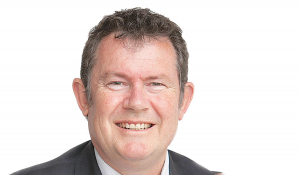Future for ag is bright
OPINION: It is a privilege to welcome you all to this year's Central Districts Field Days, the country's largest regional field days.
 Palmerston North mayor Grant Smith says Manawatu's primary industries is responsible for almost 50% of the region's GDP.
Palmerston North mayor Grant Smith says Manawatu's primary industries is responsible for almost 50% of the region's GDP.
OPINION: Make no mistake, Manawatū’s primary sector is vital – not just for the prosperity of the region and the city of Palmerston North, but also for the whole country.
Responsible for almost 50% of the wider region’s GDP, Manawatū’s primary industries provide the foundation for almost everything else.
And we are arguably the country’s most diverse agricultural region.
From venison farming in the north, to pork, poultry and vegetable produce in the south, Manawatū with Palmerston North at its centre, is New Zealand’s ‘Food and Fibre’ capital.
For instance, dairy product manufacturing was our largest export in 2022 contributing $439.4m in revenue for the city’s economy.
Over the past 150 years, these strong agricultural underpinnings have allowed Palmerston North to develop its own diverse, multi-stranded and resilient economy.
It’s an economy that is performing well despite Covid, inflationary pressures, and recent weather-related events.
However, during the district’s early pioneering days, it was never certain that the small swampy settlement in the Papaiōea clearing would one day become Manawatū’s principal town.
Foxton was the established river port connected to Palmerston North by a tramway, while Feilding was also growing at a comparable rate.
However, with the railhead for the privately owned Wellington & Manawatū Railway Company established at Longburn in 1886, and completion of the linking Hawke’s Bay line five years later, Palmerston North gained the edge.
1886 was also the year that the Manawatū and West Coast Agricultural and Pastoral Association established the Palmerston North Showgrounds.
So, in a mere 30 years from its founding, the young town had become a recognised centre for farming and the major shipping point for the region’s stock and produce to the seaports at Wellington and Napier.
As a writer in the Wanganui Herald observed at the time: “From its central position and the command it has of the railway routes, Palmerston North seems destined to become in the interior what Wellington is on the seaboard – ‘the great inland distributing port’.”
Even truer now than it was then, this feature was immediately attractive, and not only to the farming community, but also to enterprising business owners who could see potential in the cleared and fertile Manawatū plains and the town that serviced them.
Among those early agri-centred initiatives was Glaxo milk powder, New Zealand’s first designated Royal Show, the Eclipse Wire Company, Farmers Mutual (FMG), Massey Agricultural College – now Massey University, and the NZ Dairy Research Institute – now the Fonterra Global Research & Development Centre.
Later came Norwood Farm Machinery, Allflex International, NZ’s first International Agricultural Aviation Show, NZ Pharmaceuticals, and then in 1993, the Central Districts Field Days.
This heritage spirit of agri-sector and agribusiness innovation and progress is very much alive and well today.
In 2013, FoodHQ - a collaboration involving NZ’s leading food science and research institutes - was established to add value to NZ’s primary produce and food chain, moving into Te Ohu Rangihau Kai – the National Food Science Building at Massey University - in 2021.
Manawatū became the first region in New Zealand to develop an agritech strategy with the ambitious goal of becoming one of the top three global agrihubs in the world.
Within our concentrated and central geographic footprint are all the elements necessary for its realisation.
They include an influential cluster of agritech and agrifood companies, research institutes, entrepreneurs and investors; as well as established and developing intermodal distribution networks.
The number of people working in this value-added sector is also way higher than the national average. The combined returns from agri-food manufacturing; professional, technical, research and scientific services; logistics and distribution are circulated several times through the local economy.
Rightfully, Central District Field Days is a celebration of our agricultural heritage, present agribusiness profile, and future agritech potential, and we welcome its 2023 return to Manfeild with open arms.
• Grant Smith is the Mayor of Palmerston North
The Government is set to announce two new acts to replace the contentious Resource Management Act (RMA) with the Prime Minister hinting that consents required by farmers could reduce by 46%.
Prime Minister Christopher Luxon says withdrawing from the Paris Agreement on climate change would be “a really dumb move”.
The University of Waikato has broken ground on its new medical school building.
Undoubtedly the doyen of rural culture, always with a wry smile, our favourite ginger ninja, Te Radar, in conjunction with his wife Ruth Spencer, has recently released an enchanting, yet educational read centred around rural New Zealand in one hundred objects.
Farmers are being urged to keep on top of measures to control Cysticerus ovis - or sheep measles - following a spike in infection rates.
The avocado industry is facing an extremely challenging season with all parts of the supply chain, especially growers, being warned to prepare for any eventuality.

OPINION: Your old mate welcomes the proposed changes to local government but notes it drew responses that ranged from the reasonable…
OPINION: A press release from the oxygen thieves running the hot air symposium on climate change, known as COP30, grabbed your…